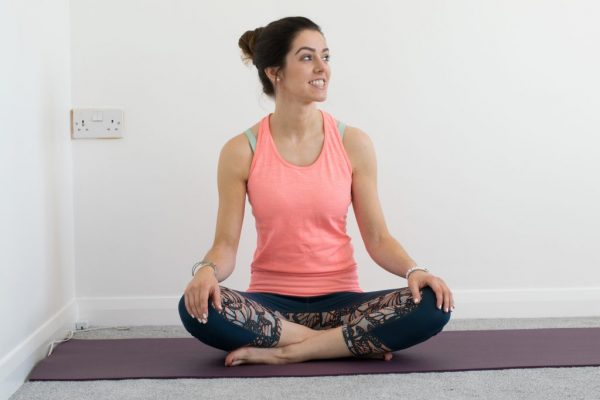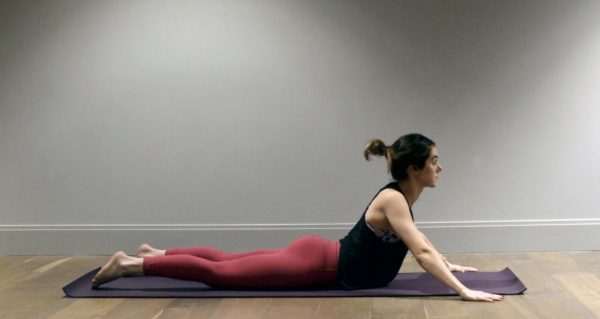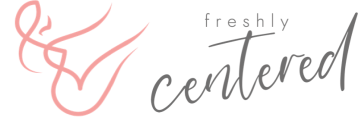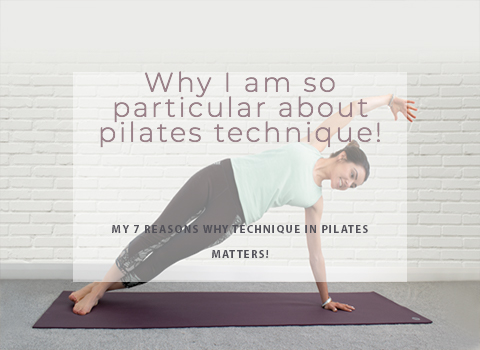I am so particular about pilates technique when teaching because it is so important, and for fitness exercises in general.
The correct technique ensures your muscles and joints are where they should be, so their work is optimised and you achieve the best results from moving more efficiently and without compensation elsewhere. It also ensures your safety from injury. Here I get into the nitty gritty detail as to why technique is especially important for pilates!
1. Neutral spine/pelvis position
Every pilates exercise begins in the neutral spinal position. This means resting your spine and pelvis in “neutral”; neither tilted in towards the mat or arched away from the mat. Research tells us the exercising in neutral is the most efficient position for activating the core muscles compared to exercising in the tilted positions. Plus, we don’t walk around with our backs flattened or with exaggerated curves therefore we shouldn’t exercise like this either! This also applies to side lying positions when I cue you to create that “small lower waist gap”. This ensure symmetry on either side and promotes optimal posture to exercise in.
2. Ribcage position
Drawing your ribcage down towards your hips allows optimal spinal alignment. By having this connection it also activates your core muscles. Ribs that regularly “flare” or lift upwards means that you have lost your core connection and ideal posture, therefore you are no longer working in the optimal position. Pilates is all about restoring optimal posture and function!
3. Core muscle activation
For most of our pilates exercises we encourage a gentle core engagement prior to the movement. This ensures you have the core support required for the exercise and that you are working these core muscles too, providing a strong and stable trunk to work from. Over-activation of these muscles will recruit other more superficial muscles too, which are not necessary and could cause fatigue earlier than expected. Try this full body pilates workout to practise these steps!
4. Breathing
 Following the pilates breathing method encourages the natural biomechanics of your ribcage. As you inhale and breathe in deeply out to the sides of your ribcage, it expands outwards (laterally). This type of breathing reduces the load on your core muscles so that they can work without resistance.
Following the pilates breathing method encourages the natural biomechanics of your ribcage. As you inhale and breathe in deeply out to the sides of your ribcage, it expands outwards (laterally). This type of breathing reduces the load on your core muscles so that they can work without resistance.
Breathing out (exhaling) is usually encouraged on the exertion part of the exercise. This is because exhaling as you contract your core causes better recruitment of the type I muscle fibres, which are our slow-twitch fibres- the core muscles essentially. If you were to inhale during exertion you will fill yourself up with air, making it harder to contract the muscles and providing a resistance for yourself to fight against too.
Following a set breathing pattern also provides a focus for your mind, increasing concentration
5. Mobility & articulation
 Too often people want to rush exercises. Taking your time to allow the mobility and segmental control (moving each section in order) will mobilise your spine and in turn recruit more of the muscles involved. Missing out this segmental control reduces muscle activation and can allow momentum to perform the movement instead. This gives less strength gains and no control. Try these mobility exercises here or this quick mobility & stretching pilates video here.
Too often people want to rush exercises. Taking your time to allow the mobility and segmental control (moving each section in order) will mobilise your spine and in turn recruit more of the muscles involved. Missing out this segmental control reduces muscle activation and can allow momentum to perform the movement instead. This gives less strength gains and no control. Try these mobility exercises here or this quick mobility & stretching pilates video here.
6. Choosing the correct level of difficulty
This is an important one too! When I teach (like most other teachers) I provide easier and harder options so that you can choose what is best for you that day based on ability, health, experience etc. However, sometimes people always want to work at the hardest level because they think it will give them the best outcome and results. What’s more important, is working at the level you can achieve that day so its efficient and effective. Proper technique and execution has WAY more value than struggling to achieve levels beyond your ability.



